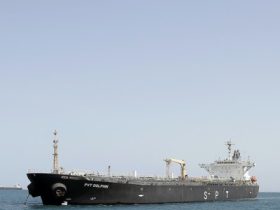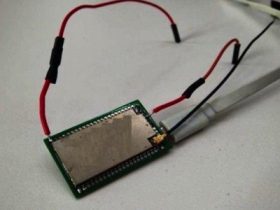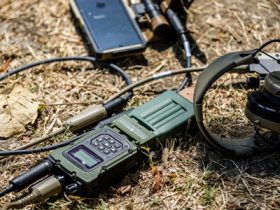PARIS — The Netherlands will deliver the first Dutch-built and financed BAE Systems CV90 infantry fighting vehicles to Ukraine in 2026, the Dutch Ministry of Defence said.
The Dutch are investing €400 million (U.S. $430 million) in a Swedish fund to build the CV90s for Ukraine, the government said June 7. That amount is the Dutch share and will pay for “several tens” of vehicles, Netherlands Ministry of Defence spokesman Kaj Leers told Defense News in an emailed reply to questions.
The Dutch government also agreed with Sweden to set up CV90 production in the Netherlands, and expects to partly produce at least 180 of the vehicles, according to Leers. Negotiations are ongoing for local firm Van Halteren Technologies and a “whole chain” of Dutch suppliers to handle “an important part” of production, he said.
The Netherlands is joining an initiative by Denmark and Sweden to provide Ukraine’s armed forces with modern armor to fight off Russia’s invasion. The CV90 is “just what is needed at the front,” Ukrainian President Volodymyr Zelenskyy said in a statement in August on the occasion of a visit to Stockholm, and Ukrainian soldiers have reportedly praised the Swedish IFV for its armor, heat-signature reducing camouflage and firepower.
Sweden and Denmark signed a joint declaration in December to send additional CV90s to Ukraine, after an initial Swedish donation of 50 vehicles last year. Ukraine and Sweden in February discussed terms and conditions for purchasing more of the vehicles.
Van Halteren will play “an important role” in supplying dozens of new CV90s to Ukraine, Sweden and possibly Denmark, which are buying vehicles to the same modernized standard as the Netherlands, Dutch State Secretary for Defence Christophe van der Maat said in a video posted on X on Friday. The Defence Ministry together with the Economic Affairs Ministry and Van Halteren is looking how the Dutch CV90 production line can be scaled up further, according to Van der Maat.
“We want to really help the Dutch know-how contribute to the growing requirement for CV90 fighting vehicles in Europe,” Van der Maat said.
The Netherlands last week took delivery of the first of its CV90s that are part of a more than €660-million mid-life upgrade aimed at keeping the IFV operational through to 2039. The Dutch are upgrading 122 vehicles, with final delivery scheduled for 2027.
The midlife upgraded for the Royal Netherlands Army is being done by BAE Systems Hägglunds in cooperation with Van Halteren, and includes a new turret with improved networking and observational capabilities, such as an electronic-optical panoramic sight. The upgrade also adds the Spike anti-tank missile by Rafael Advanced Defense Systems, and 90 vehicles will get the Iron Fist active protection system from Elbit Systems.
BAE Systems signed a contract with Sweden in May for new CV90s built to the Dutch upgrade standard to replace the vehicles donated to Ukraine. Slovakia and Czechia last year agreed to buy CV90s in deals totaling more than €3.5 billion. Leers declined to say whether the Netherlands expects to order additional new CV90s once local production has started.
The Dutch Ministry of Defence also declined to say whether the CV90s for Ukraine will be delivered with a cannon. The CV90s operated by the Dutch Army are equipped with a 35mm Bushmaster III auto-cannon, while Sweden operates a version of the CV90 equipped with a 40mm Bofors auto-cannon in a stabilized turret, which is the version first delivered to Ukraine.
Separately, the Netherlands said Tuesday it’s buying 120mm mortar systems from BAE Systems Hägglunds to mount on its CV90s, replacing the unmounted 81mm mortars currently in use with the Dutch army. The mortar systems will be installed on the vehicles after their mid-life upgrade, which should be completed in 2028. Sweden also uses the 120mm mortar on its CV90s, according to the Ministry of Defence.
The new mortars will have a range of 7 to 12 kilometers, compared with 6 kilometers for the current system, as well as a higher rate of fire, and can be operated from inside the vehicle, the ministry said. The goal is to increase accuracy by adding GPS-guided munition.
Rudy Ruitenberg is a Europe correspondent for Defense News. He started his career at Bloomberg News and has experience reporting on technology, commodity markets and politics.
Read the full article here

:quality(70)/cloudfront-us-east-1.images.arcpublishing.com/archetype/IETM6E4KZ5GUPEXOJKVEEZYLNU.jpg)
:quality(70)/cloudfront-us-east-1.images.arcpublishing.com/archetype/MC6LH3QSOREFBJJSRNPVXYCM5U.jpg)



:quality(70)/cloudfront-us-east-1.images.arcpublishing.com/archetype/QS3AZHSSERAWHPAKNRANUAXTAI.jpg)
Leave a Reply